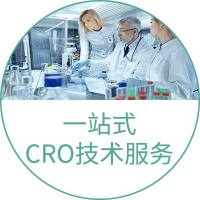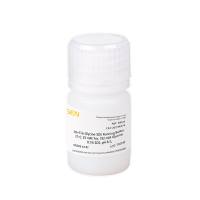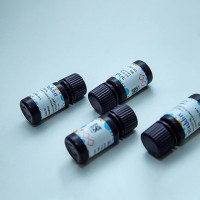蛋白质电泳技术
互联网

Serum Protein Electrophoresis
Tricine/Polyacrylamide Gel Electrophoresis
Used for pilin processing analysis but generally useful for resolution of small (15-35 Kdal) proteins of similar size.
See
Strom, M. S., D. N. Nunn, and S. Lory. 1993. A single bifunctional enzyme, PilD, catalyzes cleavage and N-methylation of proteins belonging to the type IV pilin family. Proc. Natl. Acad. Sci., 90:2404-2408.
or
Strom, M. S., and S. Lory. 1992. Kinetics and sequence specificity of processing of prepilin by PilD, the Type IV leader peptidase of Pseudomonas aeruginosa . J. Bacteriol. 174:7345-7351.
Original citation: Schagger, H. and G. von Jagow. 1987. Tricine-sodium dodecyl sulfate-polyacrylamide gel electrophoresis for the separation of proteins in the range from 1 to 100 kDa. Anal. Biochem. 166: 368-379.
Reagents:
-
Anode Buffer (+): 200 mM Tris pH 8.9 (can dilute from 10X stock)
-
Cathode Buffer (-): 100 mM Tris/100 mM Tricine/0.1% SDS (no need to pH, but will be ~8.25) these can be made as 10X stocks and diluted before use
- Gel Buffer : 3.0 M Tris, pH 8.45/0.3% SDS
Note: the pH's given for the anode and gel buffers are essential
-
Stacking acrylamide: 48% acrylamide/1.5% bis-acrylamide
-
Separating acrylamide: 46.5% acrylamide/1.5% bis-acrylamide
- Sample buffer: (add equal volume to sample), for 20 ml:
- 5 ml 0.5 M Tris, pH 6.8
- 4 ml 20% SDS
- 1 ml 2-mercaptoethanol
- 4 ml 50% glycerol
- 0.004 g bromophenol blue
- 6 ml water
Pouring Gels
For each minigel (Hoeffer "Mighty Small" or BioRad "Mini Protean-II"--scale up as required):
-
1. Separating gel:
- 15% gel
- 2 ml separating acrylamide
- 2 ml gel buffer
- 2 ml 50% glycerol
- 10% gel
- 1.22 ml separating acrylamide
- 2 ml gel buffer
- 2 ml 50% glycerol
- 0.78 ml water
- 2. Stacking gel:
- 0.25 ml stacking acrylamide
- 0.75 ml gel buffer
- 2.0 ml water
- 20 ul 10% APS
- 2 ul TEMED
Polymerize both the stacking and separating gels at the same time (I used small disposable tubes), and pour stacking gel directly onto the separating gel (pour carefully but quickly--they won't mix but the separating gel polymerizes within 2-3 minutes). Make each separating gel mixture separately and add TEMED and APS right before pouring. Multiple stacking gel mixtures can be made in the same tube, but you have around 10 minutes before these start to polymerize too.
Sample loading and electrophoresis:
For the minigels, 5-10 ul per well gives best results. Layer the samples in the well very carefully, and be sure to flush out any unpolymerized acrylamide before loading.
Electrophorese at 25-35 mA (constant current) per gel in minigel setup. Foam will appear on the top (cathode), and additional cathode buffer may have to be added during the run.
 15% tricine-PAGE
15% tricine-PAGE
Separation of prepilin and processed pilin from P. aeruginosa on a Coomassie-blue stained tricine-15% PAGE gel. The two forms differ by 6 amino acids after cleavage by
[NextPage]
SDS/Polyacrylamide Gel Electrophoresis
Standard SDS-polyacrylamide gel electrophoresis (Laemmli)--gel preparation. Volumes given are sufficient for small (8 cm X 10 cm X 1.5 mm) gel format (10 ml of monomer). Scale up volumes as needed.
1. Pour the Separating Gel
Set up your gel apparatus, prepare separating gel monomer. Add TEMED just prior to pouring gel (I "pour" the gels using a pasteur pipet and a rubber bulb). Allow to polymerize before adding stacking gel by overlaying gently with water or n-butanol. With higher % gels, one can immediately pour the stacking gel on the unpolymerized separating gel. Be careful not to mix the two layers.
| Separating Gels, in 0.375 M Tris, pH 8.8 | ||||
|---|---|---|---|---|
| 7% | 10% | 12% | 15% | |
| distilled H2 O | 5.1 ml | 4.1 ml | 3.4 ml | 2.4 ml |
| 1.5 M Tris-HCl, pH 8.8 | 2.5 ml | 2.5 ml | 2.5 ml | 2.5 ml |
| 20% (w/v) SDS | 0.05 ml | 0.05 ml | 0.05 ml | 0.05 ml |
|
Acrylamide/Bis-acrylamide (30%/0.8% w/v) |
2.3 ml | 3.3 ml | 4.0 ml | 5.0 ml |
| 10% (w/v) ammonium persulfate | 0.05 ml | 0.05 ml | 0.05 ml | 0.05 ml |
| TEMED | 0.005 ml | 0.005 ml | 0.005 ml | 0.005 ml |
| Total monomer | 10.005 ml | 10.005 ml | 10.005 ml | 10.005 ml |
2. Pour the Stacking Gel
After the separating gel has polymerized, decant the overlay, prepare the stacking monomer, add the TEMED, and pour. Insert the comb and allow to polymerize completely before running.
| Stacking Gels, 4.0% gel, 0.125 M Tris, pH 6.8 | |
|---|---|
| distilled H2 O | 3.075 ml |
| 0.5 M Tris-HCl, pH 6.8 | 1.25 ml |
| 20% (w/v) SDS | 0.025 ml |
|
Acrylamide/Bis-acrylamide (30%/0.8% w/v) |
0.67 ml |
| 10% (w/v) ammonium persulfate | 0.025 ml |
| TEMED | 0.005 ml |
| Total Stack monomer | 5.05 ml |
-
For best results:
1. Make ammonium persulfate solution fresh daily.
2. Degas solutions before adding TEMED for 15 min at room temperature.
3. Running the gel
I usually run my gels at constant current, 25-50 mA, depending on gel size. Here's the recipe for 5X SDS-PAGE running buffer. Dilute to 1X before use.
| 5X Running Buffer, pH 8.3 (1 liter) | |
|---|---|
| Tris Base | 15 g |
| Glycine | 72 g |
| SDS | 5 g |
| distilled water to 1 liter | |
- Store at room temperature until use.
4. Sample buffer
Dilute samples at least 1:4 with sample buffer, heat at 95 C for 4 minutes prior to loading.
| Sample Buffer (8 ml) | |
|---|---|
| Distilled water | 4.0 ml |
| 0.5 M Tris-HCl | 1.0 ml |
| Glycerol | 0.8 ml |
| 10% SDS | 1.6 ml |
| beta-mercaptoethanol | 0.4 ml |
|
0.05% (w/v) bromophenol blue |
0.2 ml |
[NextPage]
This protocol was cooked up from a combination of information provided by Novex (electrophoresis products) and by some of my colleagues at NIH, where I was on sabbatical leave last year. The protocol should also work for large format gels (250 x 250 x 1.5 mm gels) as well, but I haven't tried it myself. It also works well with methanol-based stain and destain, but significant amounts of methanol vapor are released into the laboratory---the ethanol is safer and just as effective. -Roger Rowlett
Procedure for developing 100 x 100 x 1 mm PAGE mingels
1. Place minigel in a loosely covered glass or microwaveable plastic (e.g., tupperware) container, ideally on top of plastic mesh if available.
2. Cover gel with 250 mL of staining solution.*
3. Microwave loosely covered gel/stain on high for approximately 2 minutes or until the solution just begins to boil. (Gels of 10-12% acrylamide are quite robust and will not be damaged even if the solution is boiled for a few minutes.)
4. Place the loosely covered gel/stain container on a slow shaker or simply leave on the bench for 15-60 minutes. It is usually possible to discern bands after as little as 15 minutes.
5. Remove stain from the container (it can be reused many times) and rinse the gel and gel container with water to remove excess staining solution.
6. Cover gel with 200-250 mL of detaining solution (staining solution minus dye).
7. Microwave on high for approximately 2 minutes or until the solution just begins to boil.
8. Place the loosely covered gel/stain container on a slow shaker or simply leave on the bench for 1-24 hours. For rapid destaining, change the destaining solution after one hour and microwave. One to three changes are usually sufficient to visualize bands with a clear background (2-4 hours total destaining time). For overnight destaining, place one large or several small crumpled Kimwipe tissues in the detaining solution to bind up dye, and agitate on a slow shaker.
9. Destained gels are rinsed throroughly with and stored in distilled water. Rinsed gels can be immediately dried in a membrane air-dryer for longer term preservation.
Stir until dye is completely dissolved, about one hour. Add 25 mL acetic acid and make to 250 mL with water. Store at room temperature in a dark bottle. The final solution is 0.1% Coomassie blue, 10% acetic acid, 40% ethanol.
The destaining solution is prepared similarly, but without dye. The original recipe is:
make to 1000 mL with water. Store at room temperature.
Bonus tip: 1.0 mm SDS-PAGE minigels run in Tris-glycine buffers can be safely run at 250 V constant voltage (twice the recommended voltage) without any degradation in separation quality. This reduces running time from 90 minutes to about 40 minutes in our hands. Novex claims you can go as high as 300 V, but I haven't had the inclination to try that with my homemade gels.
The destain procedure can be made even less toxic by replacing the destaining solution completely with MilliQ water and no organic solvents. Basically, a freshly stained gel is immersed in water then microwaved on high for 15 min for a 0.75 mm thick gel or 25 min for 1.5 mm thick gel.
This method and others are available from Elsevier Trends Technical Tips Online (http://tto.trends.com/tto/index_of_TTO.shtml) under the Electrophoresis section. Reference no. is T01089.
[NextPage]
Silver Staining of SDS-PAGE gels
IMPORTANT TIPS:
GEL PREPARATION:
GEL STAINING:









